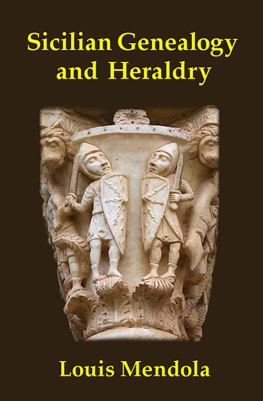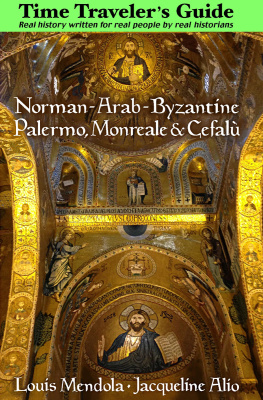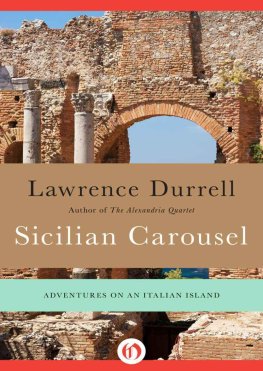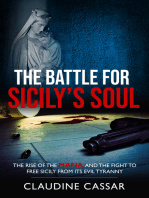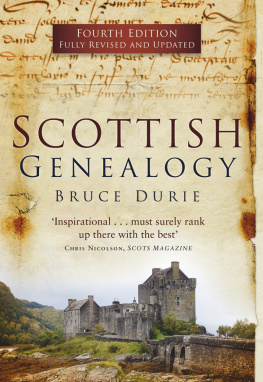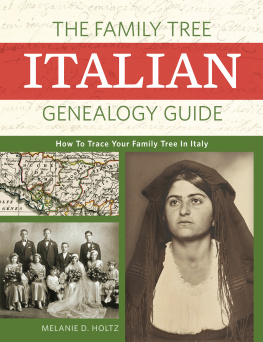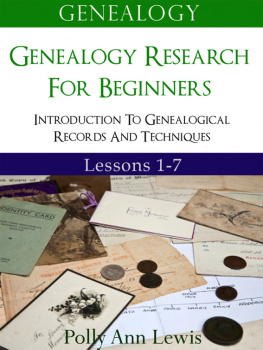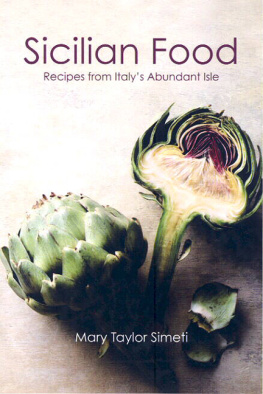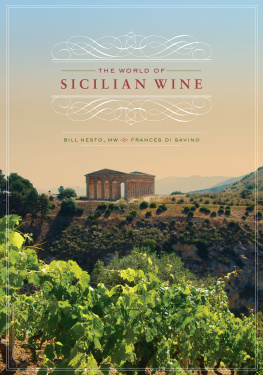Louis Mendola - Sicilian Genealogy and Heraldry
Here you can read online Louis Mendola - Sicilian Genealogy and Heraldry full text of the book (entire story) in english for free. Download pdf and epub, get meaning, cover and reviews about this ebook. year: 2015, publisher: Trinacria Editions LLC, genre: Religion. Description of the work, (preface) as well as reviews are available. Best literature library LitArk.com created for fans of good reading and offers a wide selection of genres:
Romance novel
Science fiction
Adventure
Detective
Science
History
Home and family
Prose
Art
Politics
Computer
Non-fiction
Religion
Business
Children
Humor
Choose a favorite category and find really read worthwhile books. Enjoy immersion in the world of imagination, feel the emotions of the characters or learn something new for yourself, make an fascinating discovery.
- Book:Sicilian Genealogy and Heraldry
- Author:
- Publisher:Trinacria Editions LLC
- Genre:
- Year:2015
- Rating:5 / 5
- Favourites:Add to favourites
- Your mark:
Sicilian Genealogy and Heraldry: summary, description and annotation
We offer to read an annotation, description, summary or preface (depends on what the author of the book "Sicilian Genealogy and Heraldry" wrote himself). If you haven't found the necessary information about the book — write in the comments, we will try to find it.
In Sicilian genealogy, a generation by generation lineage to the Late Middle Ages isnt unusual. This long-awaited, definitive guide shows you how to do it.
Sicily boasts the worlds best genealogical records, revealing the deep roots of a Sicilian identity and facilitating the construction of many pedigrees into the fifteenth century. Based on the authors 30 years of experience as a foremost expert in the field, this is the first complete guide ever published in English dedicated exclusively to Sicilian genealogical research. Its publication in 2013 established a new subject category in the Dewey catalogue, and it is the reference book consulted by professional genealogists researching Sicilian families.
Topics range from parochial, civil and feudal records to DNA haplotyping, religion, rural life, cuisine, ethnography, coats of arms, surname origins and Jewish genealogy, with insightful, accurate information on historiography and research strategies - a few published here for the first time.
With scientific rigor and disarming candor, the Indiana Jones of Italian history shows you how to push the envelope of your family history research into Sicilys multicultural medieval era. Family history is more than names, dates and pedigrees; it is the people and culture behind the names. Social context is not overlooked. If there were ever a handbook on Sicilian ethnology, this would be it.
This book covers a wide range of topics in detail, transcending conventional strategies to explain the how and why of historical research: shortcuts and methods as well as advice on pitfalls to avoid. As a serious guide for dedicated researchers, it presumes some familiarity with basic genealogy, recommending introductory books to complement what one reads in this one, so dont expect photographs of vital statistics records and other documents. But even for family historians at the beginning of their research, this book is an excellent consultative reference.
It brings to life an arcane, often elusive, field. Significantly, the author destroys a few myths about Italian family history, and about Italy itself, while describing real social history. Especially impressive is his refreshingly distinctive writing style, with blunt reality checks sprinkled throughout the lengthier chapters. Thats the kind of pragmatism missing from many genealogical guides.
While the chapters on the aristocracy and heraldry may interest fewer readers than those on simple lineal research, they are useful because most pedigrees before 1400 focus on the nobility.
By his own admission, Mendolas tone is at times sardonic, as if this elder statesman were scolding the fields less disciplined historians while setting the stage for its beginners. Just when you think that his treatment of a particular topic has become tiresome or excessively dry and theoretical, he inserts a concrete example to make his point. Its an effective technique.
In his assaults on the machinations of historical revisionists and genealogical fabulists, along with fake royalty and others who manipulate history for their own edification, the author takes no prisoners. Like Verres, the Roman governor of Sicily who fled into voluntary exile following Ciceros opening speech at his trial for corruption, genealogys fantasists should flee the moment Lou Mendola enters the fray. In fact, quite a few have, as the author has been consulted over the years by journalists, law-enforcement authorities and others seeking to expose genealogys identity tricksters.
His role is not unlike that of a lone sheriff protecting a town or, for European traditionalists, the last knight defending a castle. He is one...
Louis Mendola: author's other books
Who wrote Sicilian Genealogy and Heraldry? Find out the surname, the name of the author of the book and a list of all author's works by series.

